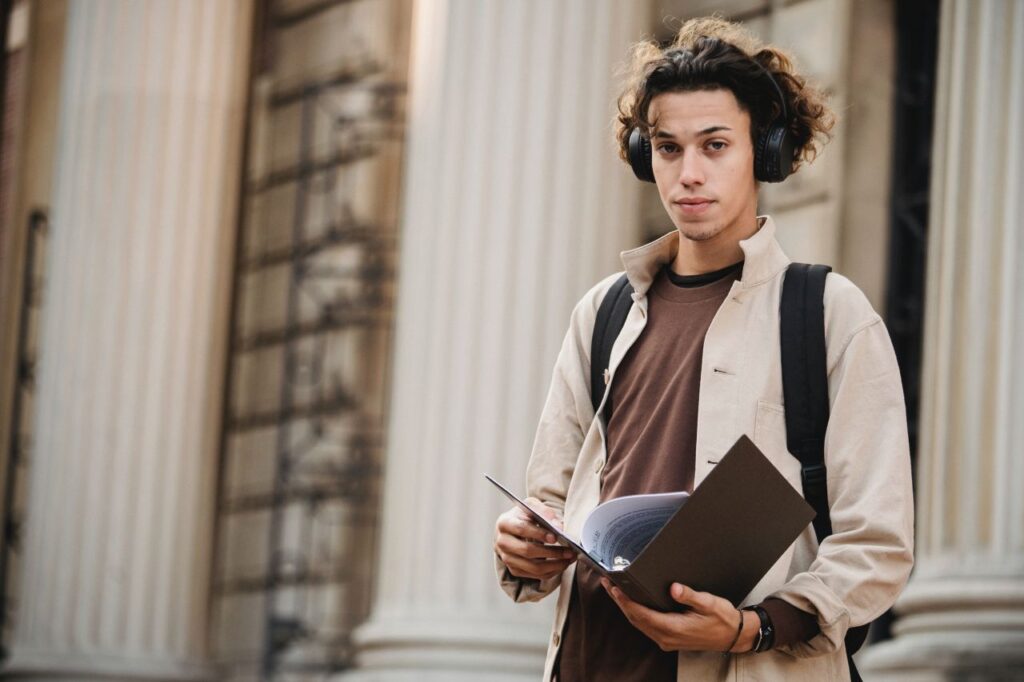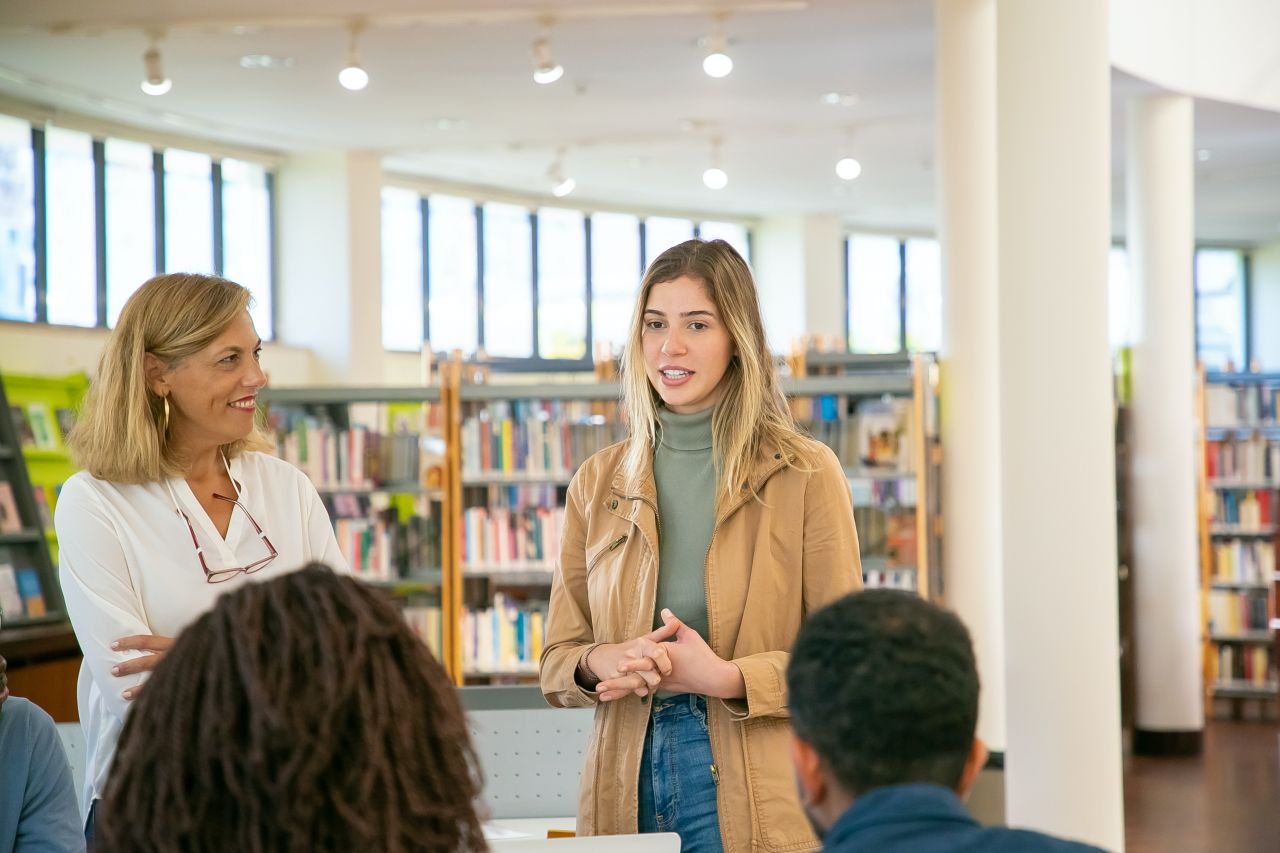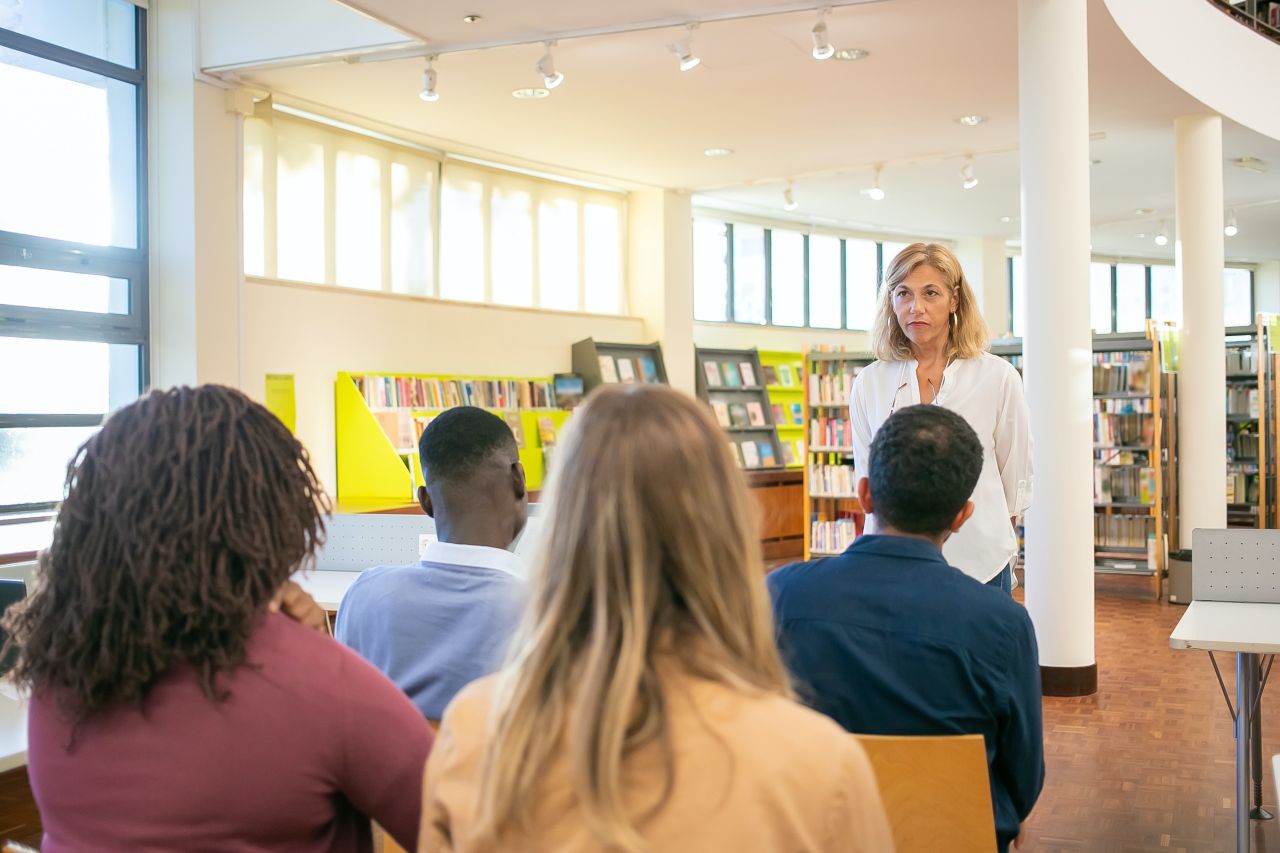People often talk about different types of learners in the classroom, but what does that mean? For example, many people think about auditory and verbal learners when they think about how people learn, but another type of learner is often forgotten: visual-spatial learners. Visual-spatial learners are those who learn best through pictures and hands-on activities.
If you're a visual-spatial learner, you might have trouble with things like reading a map or remembering verbal directions. But don't worry - some strategies can help you thrive as a visual-spatial learner! Keep reading to learn more.
What Is A Visual-Spatial Learner?
A visual-spatial learner is a student who learns holistically rather than in a step-by-step fashion. Visual imagery plays an important role in the student's learning process. Because the individual is processing primarily pictures rather than words, ideas are interconnected (imagine a web). Linear sequential thinking — the norm in American education — is particularly difficult for this person and requires a translation of their usual thought processes, which often takes more time.
Some visual-spatial learners are excellent at auditory sequential processing as well. They have full access to both systems so that if they don't get an immediate "aha" when they are looking at a problem, they can resort to sequential, trial-and-error problem-solving methods. These students are usually highly gifted with well-integrated abilities. However, most visual-spatial learners in our work are deficient in sequential auditory skills. It leads to a complex set of problems for the student. A definite mismatch exists between the student's learning style and the teacher's instructional methods.
Frequently Asked Questions
Visual-spatial processing tells you how far objects are from you and each other. People use visual-spatial processing for many tasks, like tying shoes and dancing. But unfortunately, visual-spatial trouble can make learning to read and do maths.
Spatial learners often excel at Legos, computer games, art, or music activities. Any skill in which these young people experience success should be encouraged and nurtured. Their skills, interests and hobbies may lead to careers in adult life.
Visual-spatial learning style, or visual-spatial intelligence, refers to a person's ability to perceive, analyse, and understand visual information in the world around them. Essentially, they can picture concepts with their mind's eye.
Visual-spatial thinking is the ability to perceive the visual information in the environment, represent it internally, integrate it with other senses and experiences, derive meaning and understanding, and perform manipulations and transformations on those perceptions.'
A visual learner is good at using maps and finding their way around! Wow, talk about a perfect sense of direction. The visual learner likes drawing, doodling, making posters and using colours to think rather than using words. The visual learner likes to draw and paint.
Physiological And Personality Factors.
Visual-spatial learners who experience learning problems have heightened sensory awareness of stimuli, such as extreme sensitivity to smells, acute hearing and intense reactions to loud noises. Stimuli constantly bombard them; they get so much information that they have trouble filtering it out. They tend to have excellent hearing but poor listening skills. Their ability to retain and comprehend information auditorily is weak, and they have difficulty with sequential tasks.
These children are highly perfectionistic, which means they cannot handle failure. They usually refuse to attempt trial-and-error learning because they can't cope with the failure inherent in this technique. They have an all-or-none learning style (the aha phenomenon). They either immediately see the correct solution to a problem, or they don't get it at all, in which case they may watch quietly (while pretending not to watch) or avoid the situation completely because it is too ego threatening.
Visual-spatial learners have amazing abilities to "read" people. Since they can't rely on an audition for information, they develop remarkable visual and intuitive abilities, including reading body language and facial expressions.
Many of the students described in this article were so adept at reading cues and observing people that they could tell what a person was thinking almost verbatim. Often, they sense a teacher's anxieties and ambivalent feelings towards them in school and react with statements such as, "that teacher hates me."
Traditional Education
In most cases, the visual-spatial learning style is not addressed in school, and these students' self-esteem suffers accordingly. Traditional teaching techniques are designed for the learning style of sequential learners. Concepts are introduced step-by-step, practised with drill and repetition, assessed under timed conditions, and then reviewed. This process is ideal for sequential learners whose learning progresses step-by-step from easy to difficult material.
By way of contrast, spatial learners are systems thinkers-they need to see the whole picture before they can understand the parts. They are likely to see the forest and miss the trees. They are excellent at mathematical analysis but may make endless computational errors because it is difficult to attend to details. Their reading comprehension is usually much better than their ability to decode words.
Concepts are quickly comprehended when presented within a context and related to other concepts. Once spatial learners create a mental picture of a concept and see how it fits what they already know, their learning is permanent. Repetition is completely unnecessary and irrelevant to their learning style.
However, without easily observable connecting ties, the information cannot take hold anywhere in the brain — it is like learning in a vacuum and seems to the student like pointless exercises in futility. Teachers often misinterpret the student's difficulties with the instructional strategies as the inability to learn the concepts and assume that the student needs more drills to grasp the material. Rote memorisation and drill are damaging for visual-spatial learners since they emphasise their weaknesses instead of their strengths. When this happens, the student gets caught up in a spiralling web of failure, assumes he is stupid, loses motivation, and hates school. Teachers then assume that the student doesn't care or is lazy, and behaviour problems come to the fore. Meanwhile, the whole cycle creates a deep chasm in the student's self-esteem.
In the traditional school, the atmosphere is often hostile to visual-spatial learners and their skills. The students are visual, whereas instruction tends to be auditory: phonics, oral directions, etc. The students are gestalt, aha learners and can be taught out of order, whereas the curriculum is sequential, with orderly progressions of concepts and ideas. The students are usually disorganised and miss details, whereas most teachers stress organisation and attention to detail. The student is highly aware of space but pays little attention to time, whereas the school functions rigidly.
Characteristics
The term "visual-spatial learner" was first coined by psychologist Linda Kreger Silverman PhD, an expert on giftedness and the author of several books on visual-spatial learning.2
She has identified several key characteristics of this type of learner:
- They are whole-picture thinkers who grasp a concept all at once and see the whole before acknowledging the details.
- They have vivid imaginations and are often good at coming up with unusual or unexpected ways to solve problems.
- They learn more easily when presented with visual rather than auditory information.
- They may seem disorganised.
- They neither learn in the step-by-step fashion common in the classroom nor learn well from drills and repetition.
- They struggle with showing the sequence of a process. For example, when the teacher asks them to show their work, they cannot easily do that since they see the task as a whole rather than a product of several steps. Despite this, they can work on complex tasks and are classified as systems thinkers.
- They think in pictures rather than in words.
- Silverman's research suggests that approximately 30 per cent of students can be considered strong visually-spatially, with another significant percentage leaning toward this learning style.
How Visual-Spatial Learners Learn
Visual-spatial intelligence learners learn best using written, modelled, or diagrammed instruction and visual media. Visually and spatially talented students have a good visual memory for details. They do less well with auditory-sequential teaching methods such as lecture, recitation, drill, and repetition.
In terms of what this may translate to in daily life:
- Children with this style may do better with whole word recognition rather than phonics.
- They may not perform well with spelling and handwriting.
- When learning maths, they use manipulatives and story problems instead of performing equations.
- They are likely to do better at geometry.
- They enjoy puzzles, mazes, maps, and building blocks.
Grade schools have traditionally focused on auditory-sequential learning methods that may not have served visual-spatial learners well.
These children may begin to perform better in higher grades and college, where their gifts at grasping whole concepts and the big picture become more important. These individuals are often thought of as "late-bloomers" because of this.
Favourite School Activities
Students who are strong in the visual-spatial learning style enjoy school activities such as art, drafting, shop, geometry, computer graphics, and computer-assisted design. They often have an excellent visual memory for details in print and the environment. In addition, people with visual-spatial learning styles are good at visual problem-solving and visual estimation.
Popular Career Choices
You may draw students strong in visual-spatial intelligence to careers such as video, television, drafting, architecture, photography, artistry, airline piloting, air traffic control, construction, counselling, fashion design, fashion merchandising, visual advertising, and interior design.
Specifically, in terms of STEM (science, technology, engineering, and maths) careers, you may draw visual-spatial learners to physics, engineering, astronomy, or surgery.
Helping Your Visual-Spatial Child
While visual-spatial learners tend to learn best from what they can see, traditional educational settings may not be geared toward this type of learning.
If you think that your child might lean toward this learning style, one way to make learning more appealing is to use visual aids. Pictures, graphics, tablet games, and videos can effectively make what your child is learning more interesting and accessible. (And the same goes for parents who may share this learning style.)
Also, speak with your child's teacher. There may be some easy solutions they can incorporate into the classroom, and making a teacher aware of the need may be all it takes for a chance to be implemented.
How To Teach Visual-Spatial Children
Children are taught with diagrams, pictures, and other visual information in visual-spatial teaching. Visual-spatial learners have excellent memory skills. Therefore, instead of learning through lectures, they perform better when taught with pictures.
A child with visual-spatial intelligence doesn't excel in handwriting or spelling. Instead of learning from equations, they learn maths from story problems. Also, geometry is usually their stronghold. Such children love to build blocks and maps and solve mazes and puzzles.
Most traditional schools focus on the auditory teaching method, which is ineffective for visual-spatial children.
Special Activities For Visual-Spatial Learners
Children with visual-spatial intelligence love activities that involve computer graphics, drafting, computer-assisted designs, geometry, and art. They solve visual problems better than others, and they are excellent at visual estimation.
Best Career Options For Visual-Spatial Learners
Some of the most popular career options for visual-spatial learners include photography, air traffic control, fashion design, visual advertising, fashion merchandising, television, video, artistry, architecture, construction, counselling, interior design, drafting, and airline piloting.
When it comes to science, technology, engineering, and math (STEM), these children are attracted to engineering, surgery, astronomy, and physics.
How To Help Your Visual-Spatial Child
People with visual-spatial intelligence never perform well in the traditional education system. They don't understand instructions properly, resulting in poor grades and an interest in education.
If you think that your child prefers visual-spatial learning, you can help them by providing visual data. Try to teach them through video games, videos, graphics, and other visual information. Moreover, you should always be open to talking to your teacher and finding solutions for your children.
Study Tips For Visual Learners
Visual learners have many strengths. They are meticulous and highly value planning and organisation in their academic lives.
They are very aware of colour, brightness, contrast and other visual elements. Taking advantage of these strengths can significantly boost their performance.
Below are a few study tips for visual learners to help you get started:
- Instead of writing out their work, allow students to represent their learning visually and creatively. Creativity is key for a visual-spatial learner.
- Please provide them with a personal whiteboard and dry-erase markers with plenty of colours. It allows your child to easily draw out ideas and concepts without wasting paper or taking up a lot of room.
- Try using bright colours whenever possible, as these help imprint your child's mind.
- Consider watching documentaries instead of using textbooks whenever possible.
- Create to-do lists with your child, so they can refer back to them, help them stay on track and visualise their progress.
- Incorporate lots of concept maps in your studies. Draw the main idea, and then allow your child to drill down into the categories and subcategories.
- Use copious amounts of visual aids in learning. Any auditory instruction needs to be accompanied by something that the student can see with their eyes.
- Try colour-coding. Assigning colours to common themes in textbooks, such as using a yellow highlighter for vocabulary words, allows your student to associate colour with terms.
- Colours can help the brain remember complex and abstract concepts.
- Consider creating/using PowerPoint presentations to go over topics or concepts you have studied. Make sure to use visual cues in your presentations.
- Try to provide a quiet learning space for your visual-spatial learner, as they tend to flourish in this type of environment.
- Please help your child organise their notes like an outline. Simple indentations and bullets create a visual subdivision that can help your learner see how larger concepts are related to specific ones.
- Consider investing in stationery, stickers and other supplies that your child will enjoy looking at and using. You can assign different stationery for each subject (or topic) visually distinct.
- Whenever possible, replace words with symbols. This simple trick helps visual learners associate symbols with concepts, speeds up their writing and creates that visual aid they need. For example, # can replace the word "number", ≠ can replace the word "different",
can replace the word "peace", and so on.
- Search engines can be a great tool for visual learners. You can look up words, places, and concepts in the images section instead of the regular search. Your student can study things like the water cycle, digestive system, human anatomy and more with all the visual representations of what they are studying.
Conclusion
A key component in recovering motivation for visual-spatial learners is experiencing success. You should seek individual tutoring to help these students learn to use their strengths and build their feelings of competence. Sincere praise works wonders. Spatial learners often excel at Legos, computer games, art, or music activities. Any skill in which these young people experience success should be encouraged and nurtured. Their skills, interests and hobbies may lead to careers in adult life.
In adulthood, these individuals excel in fields dependent upon their spatial abilities: art, architecture, physics, aeronautics, pure mathematical research, engineering, computer programming, and photography. Frequently, they develop their businesses or become chief executive officers (CEOs) in major corporations because of their inventiveness and ability to see the relationships of large numbers of variables.
We need individuals with highly developed visual-spatial abilities to advance the arts, technology and business. These are the creative leaders of society. We need to protect their differences in childhood and enable them to develop their unique talents in supportive environments at home and school.



 can replace the word "peace", and so on.
can replace the word "peace", and so on.